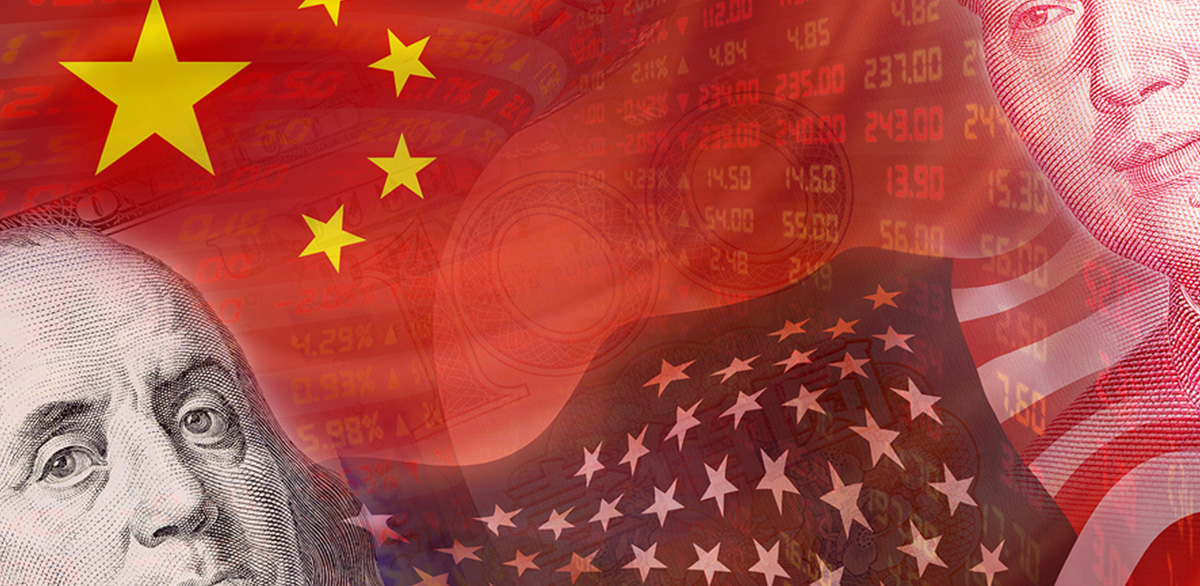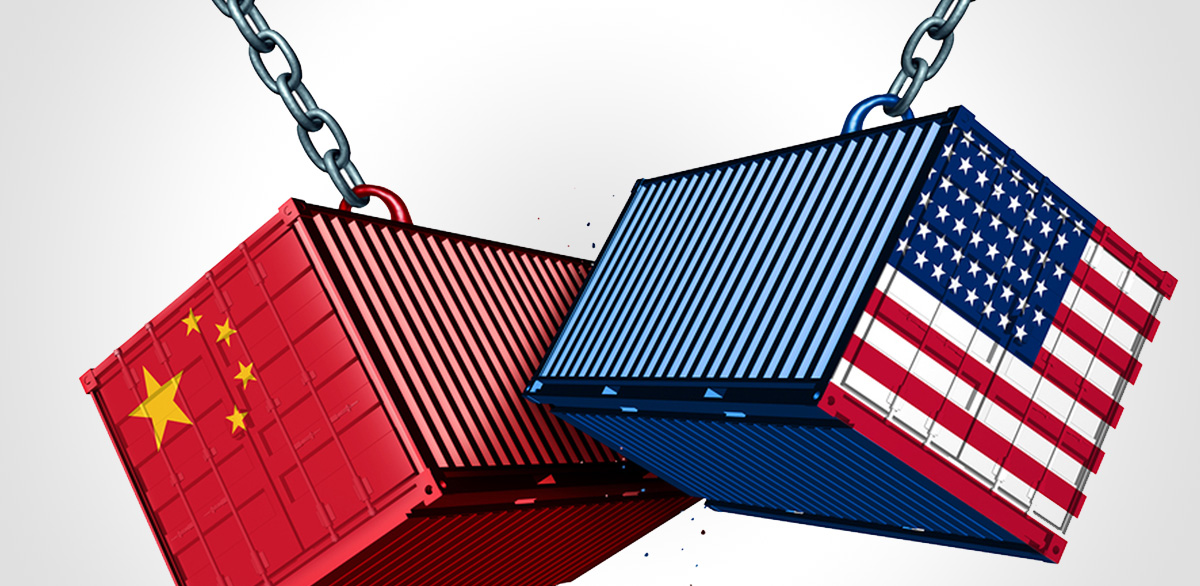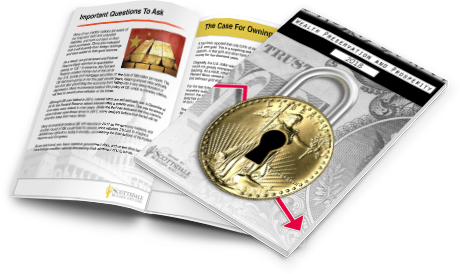
‘Investors are running for cover under haven umbrellas, as global equity indexes are crumbling under the weight of an escalating trade war.’ Stephen Innes, senior trader at Oanda [1]
A global trade war is boiling. Fiery verbal exchanges and escalating trade tariffs between President Donald Trump and leaders of the world’s other major economies continue to dominate news headlines. One week after President Trump left the Group of Seven (G-7) summit early following a Twitter spat with French and Canadian leaders over America’s increasingly tough trade policy, he slapped tariffs on Chinese imports, sparking an all-out global trade conflict.[2]
With rising inflation and widespread predictions of a recession as soon as next year, a trade war could deal a serious blow to an arguably already fragile economy. If equities are any kind of barometer of market sentiment, the country is in serious trouble.[3] The time is now to protect your wealth with precious metals—the ultimate safe haven during financial crisis.
Trade War

The possibility of a trade war with China has loomed for months. On Friday, June 15, President Trump followed through on his threats and levied a 25 percent tariff on $50 billion in Chinese goods—retribution for alleged international intellectual property violations. In response, China promptly slapped a 25 percent tax on $50 billion worth of American goods.[4]
Monday, June 18, brought a second round of tariff threats. President Trump warned China that the U.S. would impose a 10 percent tax on another $200 billion in products if China followed through on the retaliatory tariffs it promised on Friday. Rather than back down, China’s Commerce Ministry pledged to fight back with ‘comprehensive quantitative and qualitative measures and retaliate forcefully.’[5]
With the latest clash, China joined Mexico, Canada, and the E.U. in a worldwide trade conflict with the U.S.
Read about the latest developments in the trade disputes in this up-to-date timeline from the Peterson Institute for International Economics.
Economic Consequences
When you weigh the potential gains of a trade war against the economic losses, it’s difficult to see how the U.S. could come out on top even if it won. Slower economic growth, reduced international sales, steeper consumer prices, and plummeting corporate profits—these are just a handful of the problems a trade conflict could bring.
Such concerns are behind a recent shift in many economists’ outlook for the nation: 76 percent view protectionist U.S. trade policies as harmful to the U.S. economy, according to a survey by the National Association for Business Economics.[6]
American Industry Suffers
Retaliatory tariffs could hurt some major American industries: energy, farm products, and automobiles. Chinese demand for soybeans, crude oil, and cars from the U.S. could drop. These are all major exports. For example, General Motors sold over a million more cars in China than in the U.S. in 2017, and crude oil was the fastest growing export sector.
The consequences for the economy could be widespread: demand for American goods could fall, shrinking CEO and investor confidence, and ultimately sending shocks through the stock market. Trump’s former top economic advisor, Gary Cohn, has warned that a trade war could erase any corporate gains from the recent tax cuts and, worse, result in the next recession.[7]
Major infrastructure plans in the U.S. and China are yet another consideration. President Trump’s initiative to rebuild America and China’s project to reconstruct the Silk Road to promote connectivity and cooperation with Eurasian countries will require extensive resources in the coming years. Taxing imports on industrial metals and other commodities could makes these projects more expensive and hinder progress.
American Workers Face Job Losses
In the past, trade tariffs have caused more jobs to be lost than saved. In 2002, President George W. Bush levied a 30 percent tax on steel imports, saving about 3,000 to 10,000 jobs in an industry that employed only 197,000 workers. The move resulted in roughly 200,000 job losses in the U.S. manufacturing sector.
Then, of course, there is the impact on consumers. Today, about 330,000 Americans work directly or indirectly in the steel industry but over 330 million Americans rely on cars every day. While duties on steel imports could save a few hundred thousand jobs, they would also likely have a negative impact on the finances of the families of a few hundred million people across the country.[8]
American Consumers Pay Higher Prices
Tariffs on Chinese goods could generate revenue, but it won’t come from China. It will come straight out of American pocketbooks[9].
The Trump administration has highlighted that it’s targeted mostly ‘industrial significant technologies’ in its first round of tariffs against China, which took effect on July 6. The second round of 10 percent tariffs, which could be implemented after a public hearing in August, target computer and auto parts, as well as far more consumer goods: computers, telephones, lamps, furniture, and luggage.[10]
Companies that have to pay more for supplies like watertube boilers and steam turbines will pass those expenses onto consumers in the long run. ‘Production costs will go up here. Consumers are going to lose and pay a higher price no matter if the goods are consumer-based or industrial supply-chain products,’ asserted Chris Rupkey, chief financial economist at the Tokyo-based global bank MUFG.[11]
U.S. Stock Market Plunges
What kind of impact could the trade war have on the stock market? An ‘ultimately bullish’ one according to President Trump’s trade adviser Peter Navarro.[12] Investors certainly don’t agree. Stocks plummeted on the U.S. and global exchanges on the Tuesday, June 19, following President Trump’s initial imposition of tariffs against China. The Dow dropped into “slightly negative territory for the year.”
Historically, trade tariffs have been bad for the stock market. The Smoot-Hawley tariff act of 1930 caused the stock market to plunge and exacerbated the Great Depression. In 2002, the taxes Bush levied on steel imports sent equities into decline for eight straight months, and they didn’t fully recover for another two years.[13]
U.S. Dollar Crashes
‘In the 40 years I’ve been involved in the gold market, the most important determinant of the gold price has been international confidence in the U.S. dollar and in particular, the U.S. dollar as expressed by the U.S. 10-year Treasury,’ explained Rick Rule, the chief executive officer of Sprott U.S. Holdings Inc.
A trade war could make foreign investors wary of purchasing U.S. debt at a time when it’s swelling to astronomical levels. Factor in the predicted economic downturn, and the dollar looks especially vulnerable.
Then, of course, there is the possibility that President Trump could attempt to drive the value of the dollar lower. This would make American-made products less expensive to foreign markets, diminishing the negative impact of reciprocal tariffs. The president’s recent criticism of the Fed’s interest rate raising policies suggests the dollar could soon become a focal point in the trade war. His words alone were enough to drive the dollar down and gold $10 higher.[14]
If the greenback falls, gold prices could jump to $1,400 in 2018, says Rule.
A Once-in-a-Lifetime Opportunity: Protect Your Portfolio from a Trade War!
Investors riding one of the longest equities bull runs in history haven’t had much to worry about over the last eight years. Inflation and unemployment have remained low, and the economy has continued to expand.[15] But the trade disputes are already starting to shock the markets. And, when a full-blown trade war erupts, many experts believe gold will see “fireworks,” as demand for gold will surge.[16]
History has shown trade tariffs can weigh on equities. Buying gold and silver now before the economic crisis sets in and safe haven demand skyrockets is the best way to avoid paying a steep premium to protect your portfolio.
Moreover, as major infrastructure projects get underway, the entire commodities complex will likely rise. Some experts even predict the S&P Commodities Index could outperform the S&P 500 Index for a number of years, providing yet another surge to gold prices.[17]
Don’t Leave Your Portfolio Vulnerable!
Learn How to Protect Your Profits Today!
Request a FREE COPY of our Wealth Protection Guide – Click Here!
This article was updated on: JUNE 23, 2018



